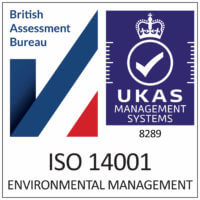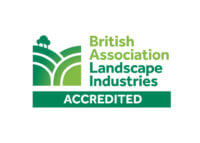How Enriched Topsoil Can Help in Solving Soil Erosion Problems
Nov 8th 2023
In this article, we will explore the potential of enriched topsoil in addressing the pressing issue of soil erosion. Soil erosion can have devastating consequences for agriculture and the environment, leading to reduced soil fertility, loss of biodiversity, and increased water pollution. By understanding the role of enriched topsoil in mitigating soil erosion, we can uncover practical solutions that safeguard our land and promote sustainable farming practices. So, let’s delve into the fascinating world of enriched topsoil and discover how it can contribute to solving soil erosion problems.
The Importance of Enriched Topsoil in Solving Soil Erosion Problems
Soil erosion is a pressing issue that affects agricultural productivity, ecosystem health, and the overall stability of the land. To effectively tackle this problem, it is crucial to understand the concept of enriched topsoil and its role in soil conservation. By exploring the causes and consequences of soil erosion, we can appreciate the significance of enriched topsoil in preventing and mitigating soil erosion.
Understanding the Concept of Enriched Topsoil
Enriched topsoil refers to the augmentation of the topmost layer of soil with organic matter, nutrients, and other beneficial substances to enhance its fertility, structure, and overall health. This enriched topsoil serves as a vital component in soil conservation strategies, as it can help combat soil erosion and promote sustainable land management practices. By enriching the topsoil, we can improve its ability to retain moisture, support root growth, and withstand the impacts of rainfall and flooding.
Exploring the Causes and Consequences of Soil Erosion
Soil erosion occurs due to various natural and human-induced factors. Natural factors include wind, water, and gravity, while human activities such as deforestation, improper land management practices, and intensive agriculture exacerbate the problem. The consequences of soil erosion are far-reaching and significant, including reduced agricultural productivity, degradation of ecosystems, increased water pollution, and even land degradation and desertification. Understanding the causes and consequences of soil erosion helps highlight the urgency of implementing measures to prevent further damage.
The Role of Enriched Topsoil in Soil Conservation
Enriched topsoil plays a crucial role in soil conservation efforts by addressing the root causes of soil erosion and promoting sustainable land management practices. By enhancing the nutrient content, organic matter, and structure of the topsoil, we can significantly reduce erosion rates and promote soil health. Enriched topsoil acts as a protective layer, preventing the eroded soil from being washed away and ensuring the land maintains its fertility and stability. Additionally, the improved water-holding capacity of enriched topsoil reduces runoff and helps retain moisture, further supporting plant growth and ecosystem resilience.
Advantages of Enriched Topsoil in Preventing Soil Erosion
Enriched topsoil offers various advantages in preventing soil erosion. Firstly, it improves soil structure, making it more resistant to erosive forces such as wind and water. With better aggregation, the soil particles are bound together, reducing the likelihood of detachment and transport. The increased organic matter in enriched topsoil also enhances its binding capacity, further stabilizing the soil.
Moreover, enriched topsoil helps reduce runoff by improving water infiltration and retention. The organic matter acts as a sponge, holding water and preventing it from quickly running off the surface. This reduces the erosive potential of rainfall and minimizes the loss of valuable topsoil. Additionally, the presence of organic matter in enriched topsoil also stimulates the activity of microorganisms and beneficial soil organisms, further improving soil health and structure.
Techniques for Enriching Topsoil to Combat Soil Erosion
To combat soil erosion effectively, various techniques can be employed to enrich topsoil. These techniques aim to improve soil structure, enhance nutrient content, protect topsoil through cover crops, and implement mulching strategies.
Introducing Organic Matter to Improve Soil Structure
One of the key techniques for enriching topsoil is the addition of organic matter. Organic matter improves soil structure by promoting aggregation, enhancing water-holding capacity, and increasing nutrient availability. Additionally, it reduces soil compaction and improves soil aeration, creating an ideal environment for plant growth and root development.
Enhancing Nutrient Content through Composting
Composting is a valuable technique for enriching topsoil by increasing its nutrient content. Through the decomposition of organic matter, composting produces a nutrient-rich soil amendment that can be added to the topsoil. Compost enhances the availability and diversity of essential plant nutrients, promoting healthy plant growth. By incorporating compost into the topsoil, farmers and gardeners can improve soil fertility and reduce the reliance on synthetic fertilizers, thereby minimizing the risk of nutrient runoff and pollution.
Implementing Cover Crops to Protect Topsoil
Cover crops are an effective technique for enriching topsoil and protecting it from erosion. By planting cover crops such as legumes, grasses, or small grains, farmers can provide a living cover that protects the soil surface from the impact of rainfall and wind. Cover crops help minimize the detachment and transport of soil particles, reduce runoff, and promote soil aggregation. They also contribute organic matter when terminated, adding valuable nutrients and improving soil structure.
Mulching Techniques for Soil Erosion Control
Mulching is another technique used to enrich topsoil and control soil erosion.
The Benefits of Enriched Topsoil in Soil Erosion Prevention
Enriched topsoil provides numerous benefits in preventing soil erosion, ensuring sustainable land management practices, and supporting ecosystem health.
Retaining Soil Moisture and Reducing Runoff
By enriching the topsoil with organic matter and implementing appropriate soil conservation techniques, the water-holding capacity of the soil increases. Enriched topsoil can retain moisture for longer periods, reducing the need for frequent irrigation and minimizing water runoff. This not only conserves water resources but also helps prevent topsoil erosion caused by heavy rainfall or improper irrigation practices.
Promoting Root Growth and Soil Stability
Enriched topsoil provides an ideal environment for root growth, allowing plants to establish strong root systems. Healthy root systems anchor the soil, preventing erosion caused by wind and water. The improved soil structure and nutrient availability in enriched topsoil stimulate root development, leading to healthier and more productive plants. Furthermore, well-established roots contribute to soil stability and the formation of soil aggregates, enhancing the resistance of the soil to erosion.
Enhancing Soil Fertility and Nutrient Availability
Enriched topsoil significantly enhances soil fertility and nutrient availability. The addition of organic matter replenishes essential nutrients and provides a continuous source of slow-release nutrients for plant uptake. By reducing the reliance on synthetic fertilizers, enriched topsoil helps minimize nutrient runoff and pollution, promoting environmentally sustainable agricultural practices. Furthermore, the increased nutrient content in enriched topsoil supports plant growth, boosts crop productivity, and contributes to long-term soil health and sustainability.
Mitigating the Impact of Heavy Rainfall and Floods
Enriched topsoil plays a crucial role in mitigating the impact of heavy rainfall and floods. The improved soil structure and water-holding capacity of enriched topsoil allow it to absorb and retain a greater amount of water during periods of intense rainfall. This reduces the amount of runoff and the erosive power of the water, minimizing the risk of soil erosion and sediment runoff into water bodies. Enriched topsoil acts as a natural defense mechanism against flooding and helps maintain the stability of the land, protecting both agricultural productivity and surrounding ecosystems.
Case Studies: Enriched Topsoil in Action
To exemplify the effectiveness of enriched topsoil in combating soil erosion, let us explore three case studies where enriched topsoil techniques have been successfully implemented in different contexts.
Successful Implementation of Enriched Topsoil in Agriculture
In the agricultural sector, enriched topsoil has been widely adopted to improve soil health and reduce erosion. For example, in the United States, farmers in Iowa have implemented cover cropping and no-till practices to enrich the topsoil and combat erosion. By planting cover crops during the winter to protect the soil surface and using advanced equipment that minimizes soil disturbance during planting, farmers have observed reduced erosion rates, improved water infiltration, and increased soil organic matter content. These practices have not only improved soil health and resilience but also enhanced crop yields and subsequently improved farmers’ livelihoods.
Enriched Topsoil Techniques in Ecological Restoration Projects
Enriched topsoil techniques have also proven effective in ecological restoration projects. In Australia, the restoration of degraded landscapes, such as mine sites or eroded farmlands, often involves the application of enriched topsoil. By incorporating organic matter, nutrients, and beneficial soil microbes into the topsoil, restoration practitioners have successfully rehabilitated these areas, restoring native vegetation and improving soil stability. The enriched topsoil acts as a foundation for the establishment of diverse plant communities, aiding in the recovery of ecosystems and the prevention of further erosion.
Enriched Topsoil Applications in Urban Landscaping
Enriched topsoil techniques have found applications in urban landscaping projects as well. In cities and urban areas, soil erosion can be a significant issue due to impervious surfaces and inadequate soil management practices. To address this challenge, landscape architects and urban planners have incorporated enriched topsoil techniques into their designs, creating green spaces with healthy and erosion-resistant soils. By implementing techniques such as composting, mulching, and soil amendment applications, these projects have successfully reduced erosion, enhanced plant growth, and improved the overall resilience of urban landscapes.






